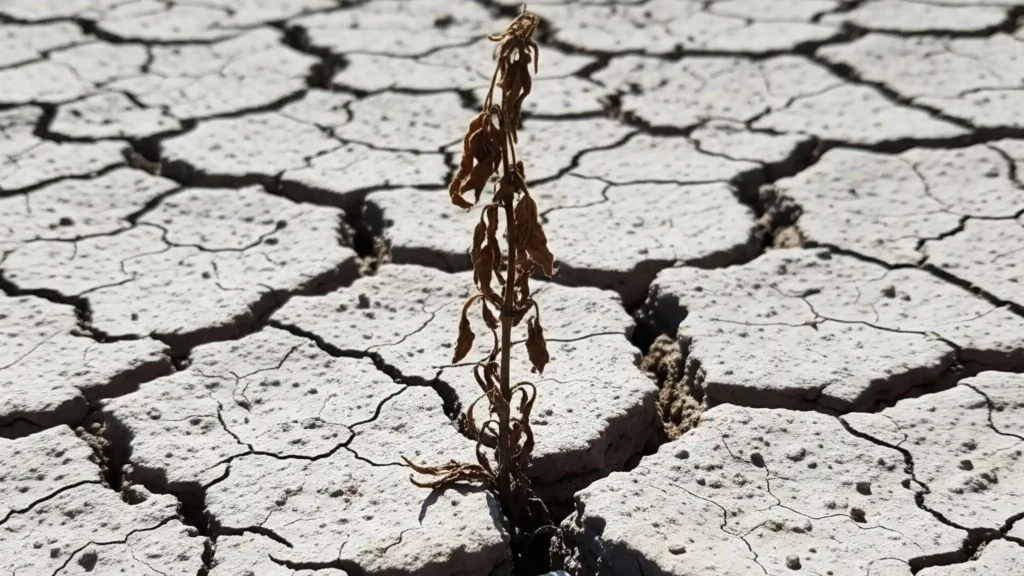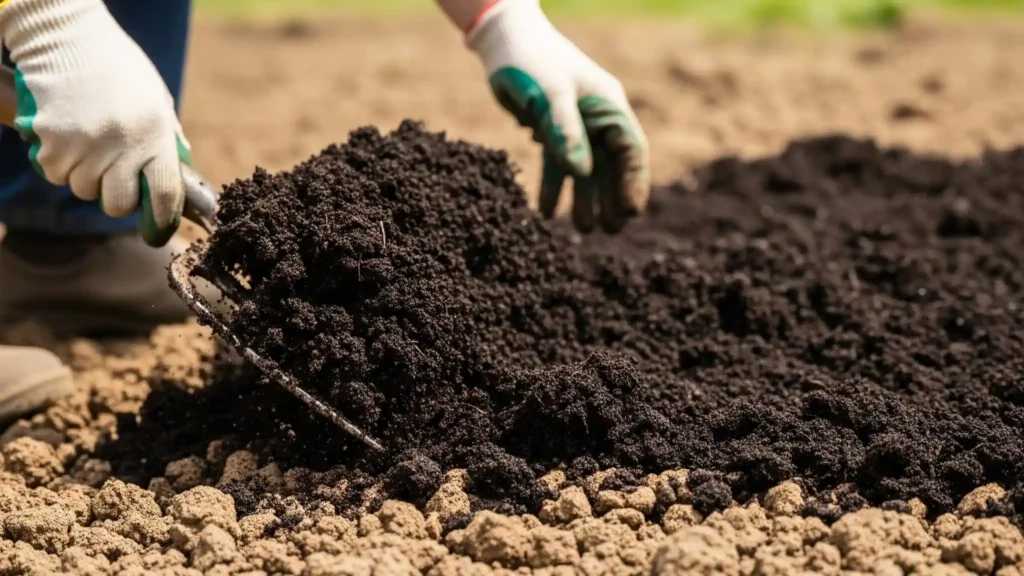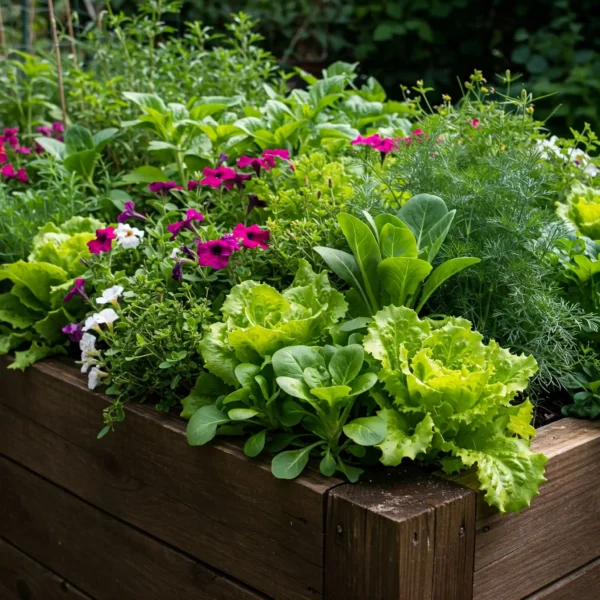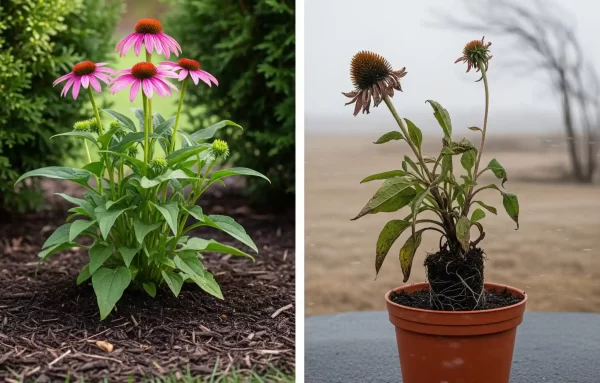Can plants grow well in clay soil? Spoiler alert: Beautifully, indeed!
Alright, let’s talk about clay soil, which makes a lot of gardeners sigh. You understand exactly what I mean if you have ever dug into your garden and found yourself up against thick, sticky, or rock-hard soil. It could feel like you’re trying to plant in a brick! However, I’m happy to report that clay soil is incredibly beneficial for plants. Yes, really!
Understanding your clay soil is the first step to creating a garden you will love, but it may take some time and expertise. Think of this as your handy manual for making the most of clay—not just for survival. What clay soil is, how to make it better, and—the exciting part—which beautiful plants will be happy to live there will all be covered. Put on your gardening gloves—you may need them—and let’s begin.
So what exactly is clay soil? Knowing the Foundation of Your Garden
What about clay, then? To put it simply, clay soil is made up of minuscule mineral particles. On a microscopic level, clay is similar to thin, flat plates that are stacked very close to one another. Clay’s structure gives it a special density.
How can you tell if you have clay? Here are two easy tests:
- For The Squeeze Test, take a handful of moist (not soggy) soil and squeeze it. If it forms a tight ball that doesn’t crumble easily or rolls into a ribbon shape between your fingers, you most likely have clay.
- The feel test is passed by clay soil, which feels thick and sticky when wet and can dry into hard, almost concrete-like clumps in the summer.
These days, Clay occasionally receives a bad rap, but it’s not all bad news!
The Advantages of Clay
- Because clay particles are so good at holding onto nutrients, your soil may be naturally very rich.
- Water Retention: Its ability to hold onto water can help established plants during drought seasons, even though it can be challenging at times (more on that in a moment).
The Typical Challenges:
- Water has little room to move through those densely packed particles.
- Compaction: It is easily compressed, which hinders roots’ ability to sift through and absorb oxygen.
- Slow to Warm: Clay soil takes a long time to warm up in the spring, which may cause planting to be delayed.
Understanding these principles is like getting to know a new friend, flaws and all!
Understanding Clay Soil’s Oddities: The Good, the Bad, and the Muddy
You might have developed some of its… let’s call them “strong personality traits” as a result of gardening in clay. It’s okay, we’ve all been there!
Drainage drama is typically the biggest irritant. After a heavy rain, does water seem to just sit on top of your soil for a long time? That’s clay like that. Plants that rest in moist soil may develop root rot, which is undesirable to all plants.
Compaction from heavy machinery or even walking on wet clay soil can push out the air spaces needed for root respiration. It’s similar to trying to grow a plant in a pot that is too small.
The Spring Slowdown: Because clay retains so much water, it warms more slowly in the spring than sandy or loamy soils. This may mean a later start for some of your favorite plants.

Clay soil can become very hard and even crack if it completely dries out in the summer heat. Are you hoping to dig in this? Not fun.
Sometimes Nutrient Lock-Up! Even though clay is typically rich in nutrients, plants may not always be able to fully access those treasures due to its thick structure and potential pH issues.
“Yes, that’s my garden!” is what you’re thinking as you nod along. Calm down. The good news is that there are excellent ways to use these common clay properties.
Keep going! How to Create a Plant-Friendly Paradise Out of Your Clay
Now that you have the opportunity to become a soil superhero, let’s get to work! You have a remarkable ability to transform your clay soil from challenging to adored. The first, most important golden rule? Organic stuff, organic stuff, organic stuff!
Compost is your best friend. The only thing that is advised for clay soil is the addition of well-rotted compost. It works its magic through:
- enhancing soil structure by binding clay particles into bigger clumps.
- Improving drainage is facilitated by expanding air gaps.
- supporting healthy soil life and adding nutrients.

Other Organic Delights: Do away with compost! Well-rotted manure (let it age first!), shredded leaves (leaf mold), and other decomposed organic materials are also great.
If you want a quicker start or your clay is very resistant, think about building raised beds or mounded planting areas called berms. Your plants will find it easier to establish their roots above the thick clay in these if you use a good mixture of compost and topsoil.
Astute Digging:
Clay soil should crumble as you dig, so it’s best to work it when it’s damp but not soggy. Its structure can be destroyed and further compaction increased if you dig or till it while it’s wet.
Focus on adding organic material to the top few inches each year rather than doing extensive tilling. For new beds, you could do a more thorough initial dig that incorporates modifications.
Busted! The Myth of Sand. To improve drainage, some people suggest sanding clay soil. Don’t! A material that is very similar to concrete can be created by mixing clay with sand. Since a lot of sand is required to truly change things, it’s typically not the best tactic. Stay away from organic materials.
Consider cover crops: For larger areas or if you’re planning ahead, planting cover crops, such as rye or clover, and then tilling them into the ground can gradually improve soil structure and add organic matter.
It takes time and effort to improve clay soil. Any organic material addition, no matter how small, matters!
[[ Professional Advice: The “Slow and Steady” Key to Clay’s Success ]]
One of the most important lessons I’ve learned from working with clay soil is that true patience is a gift. Composting won’t transform your soil in a single application. Think of it as making a very good sourdough starter; it takes time, consistent work, and a little attention. Small, seasonal additions of organic matter will gradually improve the drainage, structure, and overall health of your soil. Steer clear of the temptation to over-till or use quick fixes. Slow, steady progress produces the most satisfying and long-lasting results. Your back and your plants will thank you for it in the long run.
Choosing Your Winners: Plants That Adapt Well to Clay Soil
The most fun part is about to begin: choosing your plants! You may be pleasantly surprised to learn how many beautiful and robust plants can not only survive but thrive in clay, especially as you begin to improve its structure.
Strong, vigorous root systems that can pierce more dense soil are typically found in plants that do well in clay. Many are also adaptable to clay’s natural fluctuating moisture content, which ranges from somewhat wet to somewhat dry. Native plants from your region are frequently excellent choices because they are already adapted to the local soil types, including clay if it is prevalent there.
As you choose, think about whether the plant will be placed in your modified clay (which will create more options) or if you need something very durable that can withstand less ideal conditions.
Let’s look at some clay garden stars!
Our Favorite Everlastings
Perennials are fantastic because they grow bigger and better every year. A few well-known clay winners are as follows:
- Coneflowers (Echinacea) are cheerful, daisy-like flowers that are tough as nails. They establish strong, deep roots that tolerate a little bit of thick soil and are excellent at attracting pollinators.
- Many hosta varieties, which are prized for their beautiful leaves, are surprisingly adaptable and will flourish in clay, especially in areas that receive shade.
- Hemerocallis daylilies: Talk about basic maintenance! Daylilies are very tolerant and will bloom in a variety of conditions, including clay. And so many colors to choose from!
- Once established, Black-Eyed Susans (Rudbeckia hirta) are sunny yellow flowers that will brighten any garden and are remarkably resistant to clay soils and drier conditions.
- Sedum (Stonecrop): Succulents that thrive in clay, especially tall varieties like ‘Autumn Joy,’ do well as long as it’s not constantly soggy. They offer great interest in the latter part of the season.
- Peonies (Paeonia): It’s true that these lovely, blousy beauties can thrive in clay! They are drawn to clay soil because it retains nutrients. Just make sure the drainage is suitable.
- Late-summer and fall blooming asters provide a wonderful display of color and attract butterflies. They are generally quite content on clay soils.
Hardy Shrubs That Can Handle Clay
Shrubs provide structure and year-round interest. Many are surprisingly suitable for clay:
- Many varieties of Hydrangea paniculata (panicle hydrangea) and Hydrangea arborescens (smooth hydrangea, especially ‘Annabelle’) are fairly tolerant of clay, although some are more picky.
- Viburnum: A large shrub genus with a wide variety of species and varieties that offer fruit, flowers, and fall foliage.
- Spirea are worker shrubs that tolerate a range of conditions, including clay, and frequently bloom profusely.
- Dogwood (Cornus): Particularly the shrubby varieties, such as Red Twig Dogwood, which, with their colorful stems, offer excellent winter appeal. They typically thrive in conditions with wet clay.
- Potentilla is a long-blooming, hardy little shrub that doesn’t require much and does well in clay soil.
- One of the first signs of spring is forsythia! These bright yellow bloomers will grow well in clay and are very adaptable.
Ingenious Planting Methods for Clay Soil Success
You have improved your soil (or are on your way to doing so) and selected some plants that prefer clay. For the best chance of success, how do you plant them now? The following are some trade secrets:
- Dig a planting hole that is two to three times wider than the plant’s root ball, but typically no deeper, when planting in clay. Instead of only going down into possibly compacted clay, this encourages roots to spread out into the surrounding (ideally improved) soil.
- Before backfilling around the plant, mix some compost or other organic material into the soil you removed from the hole. As a result, the roots can more easily integrate into the local soil. You want the plant to eventually adapt to the soil in your yard, so don’t replace all of the soil with pure compost.
- “Proud” plant: This is great clay advice! Position the plant so that the top of its root ball, or the root flare, where the roots and stem meet, is an inch or two above the level of the surrounding soil. The soil should then be gently sloped to meet it. This prevents water from accumulating around the plant’s crown, which is a common issue in slow-draining soil.
- After planting, cover your plants with a layer of organic mulch (such as compost, wood chips, or shredded bark) that is two to three inches thick and spaced a few inches from the stems. Mulch is a super hero in clay soil:
- It prevents the soil from drying out too quickly and becoming too hard.
- It keeps the soil temperature more constant.
- Weeds are avoided.
- As it breaks down, it adds more organic matter!
- Watering Wisdom: Water heavily and infrequently rather than in little sips daily. This promotes deeper root growth. To avoid soggy conditions, especially with clay, allow the top inch or two of soil to slightly dry out in between waterings.
Advice for Continued Maintenance: Taking Good Care of Your Clay Garden Over Time
Clay gardening is challenging, but it’s a rewarding ongoing collaboration! Here’s how to keep your clay garden happy for many years to come:
Continue to Feed the Soil: Apply a new layer of compost or other organic material to your garden beds each year, preferably in the spring or fall. Just spread it across the surface; worms and the weather will assist it. This continuous addition is essential for long-term soil health.
Refresh your mulch: Mulch decomposes naturally over time, so replace it as needed to maintain that beneficial layer.
Continue to water your plants deeply and sparingly. Find out how your plants respond and how your soil feels.
Fertilizing Facts: Because clay soil is typically already nutrient-rich, you may not need as much fertilizer as you think. A soil test every few years is your best friend here. It can inform you of any deficiencies in specific nutrients. For overall soil health, organic fertilizers are typically better.
This is a big one for clay! To prevent compaction, avoid walking on your garden beds, especially when the soil is wet. Use designated routes or stepping stones if you frequently need to visit a particular area.
These routine methods, along with a little ongoing care, will make your clay garden better and easier to manage.
[[ A Kindly Reminder ]]
Remember that even the toughest clay-tolerant champions have their limits and preferences. Always double-check plants you bring home for specific needs. The conditions of your specific garden, such as the amount of sunlight it receives and any microclimates, also have a big impact on how well plants will thrive. Keep an eye on your plants, record their acclimatization, and adjust your care as needed. A little gardening experimentation is always part of the fun!
This is something you can manage! Taking in Your Clay Soil Garden’s Beauty
That’s it, then! Clay soil poses some challenges, but it is by no means a deal-breaker for gardening. With a little know-how, the right adjustments, and smart plant choices, your clay soil can truly serve as the foundation for a stunning and productive garden.
Think about the nutrients it contains, the help it might give for strong roots, and the happiness you will feel when you see your plants flourish. It is undoubtedly a journey, but it can also be quite rewarding.
So embrace your clay! You’ll be astonished at how much you can develop with a little information and a dash of patience. Even if it seems a bit sticky at first, don’t be afraid to get your hands dirty.
Happy gardening!









